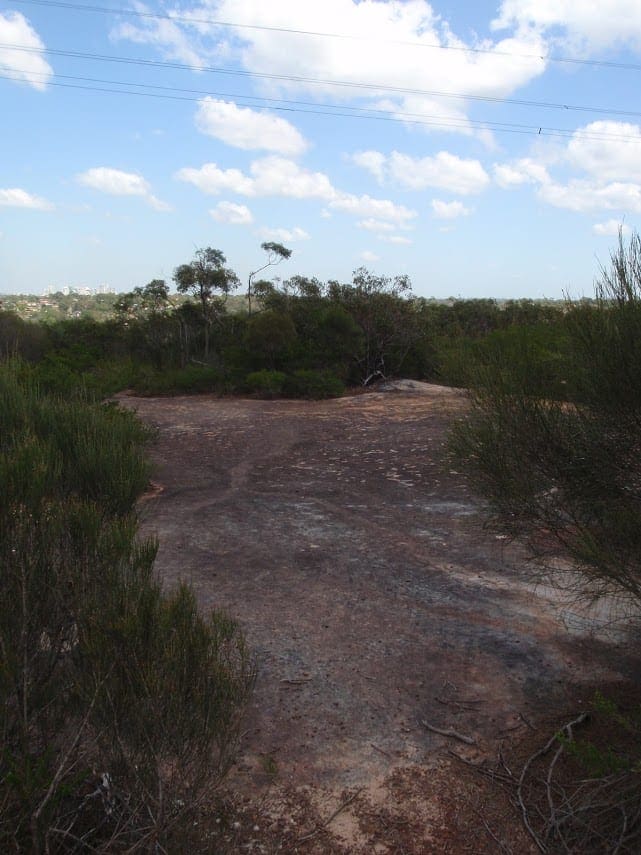Hike at a Glance
Max elevation: 0m
Min elevation: 0m
Total Ascent: 0m
Hike overview
Seaforth Oval to Natural Bridge track is a scenic walk that's full of history, but that's not all that'll get your pulse racing. The descent into Bantry Bay via the Timber Getters track is difficult and steep. About halfway down it crosses the historic Old Bullock track, which was constructed in 1856 to haul sawn timber from sawmills in 'The Big Forest' owned by James Harris French (after whom Frenchs Forest was named) to the shores of Bantry Bay.
At the end of the Timber Getters track, you'll reach a rest area with toilets, once the site of the Bantry Bay 'Pleasure Gardens' dance hall. From 1915 until 1973 however, it was part of the site of the Bantry Bay Explosives Magazine complex, which is what you'll see today.
The Bay track follows the line of the waterfront and eventually winds its way up to the base of 'The Bluff'. The climb is tough going, however you'll be rewarded with spectacular views of Middle Harbour when you reach the top. From 'The Bluff', you'll follow The Bluff track until you reach Natural Bridge track. For a longer walk, take Natural Bridge track to Davidson Park.
Gallery
Got some great shots from this hike? Upload your photos here to inspire others and show off the beauty of the trail!
Click to view form >>
Submitting your photos doesn’t mean you lose ownership. You can be credited for your contributions, and you can request removal at any time.
Content use
Please don’t copy GPX files or content from this site to AllTrails or other platforms. Each trail has been personally mapped, documented, and refined to support Australia’s bushwalking and hiking community. While some details come from land managers, every listing reflects significant personal effort. This is a free, community-driven initiative—your respect helps keep it that way.
Walk map and GPX file
It looks like I don’t have a GPX file for this trail yet. If you have one to share, please email it to me! I’ll verify it against official maps before adding it to help other hikers have a safer, easier experience. Thanks for contributing to a better hiking resource.
Getting there
Getting to the trailhead: Garigal National Park.
This walk starts at Seaforth Oval, Wakehurst Parkway, Seaforth. To get there:Make your way to Warringah Road, Frenchs ForestAt Blackpitt Reserve head south into Wakehurst ParkwayTurn right into Seaforth Oval (opposite Burnt Street)It can be a busy place on the weekend, so parking might be limited. Parking Parking is available at Seaforth Oval, Wakehurst Parkway, Seaforth, and on Gratton Crescent if you start the walk at Forestville.
Visit NSW National Parks and Wildlife Service for more information on this trail.
The longitude and latitude of the start and end points are approximately only and should not be used for navigation purposes. Please contact me if you know the correct coordinates.
Closest towns to this walk: Allambie Heights, Belrose, Davidson, Forestville, Frenchs Forest, Lindfield, Manly, Manly Vale, Narraweena, North Manly, North Turramurra, Northbridge, Round Corner, St Ives, Terrey Hills, The Entrance, Wahroonga, West Pymble
About the region
The Garigal National Park is a protected national park that is located within the North Shore and Forest District regions of Sydney, New South Wales, in eastern Australia. The 2,202-hectare national park is situated approximately 20 kilometres north of the Sydney central business district.
Similar walks nearby
Looking for more walks in or near Garigal National Park? Try these trails with a similar difficulty grade.
Track grade
Grade 3 (Moderate) - Walks for Most Fitness Levels: Grade 3 on the AWTGS represents moderate walking tracks. These are ideal for walkers with some fitness who are comfortable with some hills and uneven terrain. While suitable for most ages, some bushwalking experience is recommended to ensure a safe and enjoyable experience. Tracks may have short, steep hill sections, a rough surface, and many steps. The total distance of a Grade 3 walk can be up to 20 kilometers.
Explore safe
Plan ahead and hike safely! Carry enough water, pack layers for changing conditions, and bring safety gear like a torch, PLB, and reliable communication device. Check official sources for trail updates, closures, and access requirements, and review local weather and bushfire advice. Most importantly, share your plans with someone before you go. Being prepared makes for a safer and more enjoyable hike! Stay Safe, Explore More, and Always #ExploreSafe.
Packing checklists
What you carry in your pack depends on factors like weather, terrain, and your adventure type. Not sure what to bring? My free planning, food, and packing checklists are a great starting point, covering day hikes, overnight trips, and multi-day adventures. Use them to customise your kit and always prioritise safety.
Let someone know
Before heading out, take a moment to fill out your trip intentions form. It’s a quick way to share your hike details with family or friends. If something goes wrong, they can notify emergency services, ensuring a faster response and peace of mind. Stay safe and enjoy your adventure
Suggest an edit
Spotted a change on this trail? Maybe there are new features, the route has shifted, or the trail is permanently closed. Whatever the update, I’d love your input. Your feedback helps fellow hikers stay informed and ensures that our trail info stays fresh and reliable.
Acknowledgement of Country
Trail Hiking Australia acknowledges the Traditional Owners of the lands on which we hike and pay respects to their Elders, past and present, and we acknowledge the First Nations people of other communities who may be here today.






